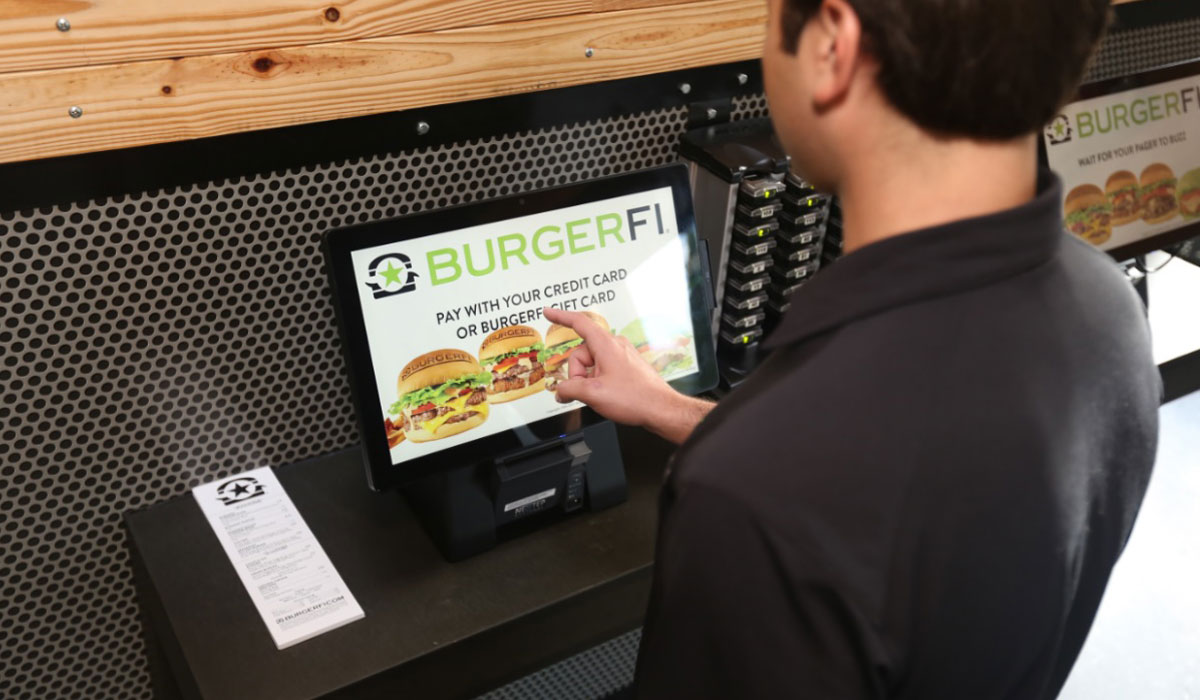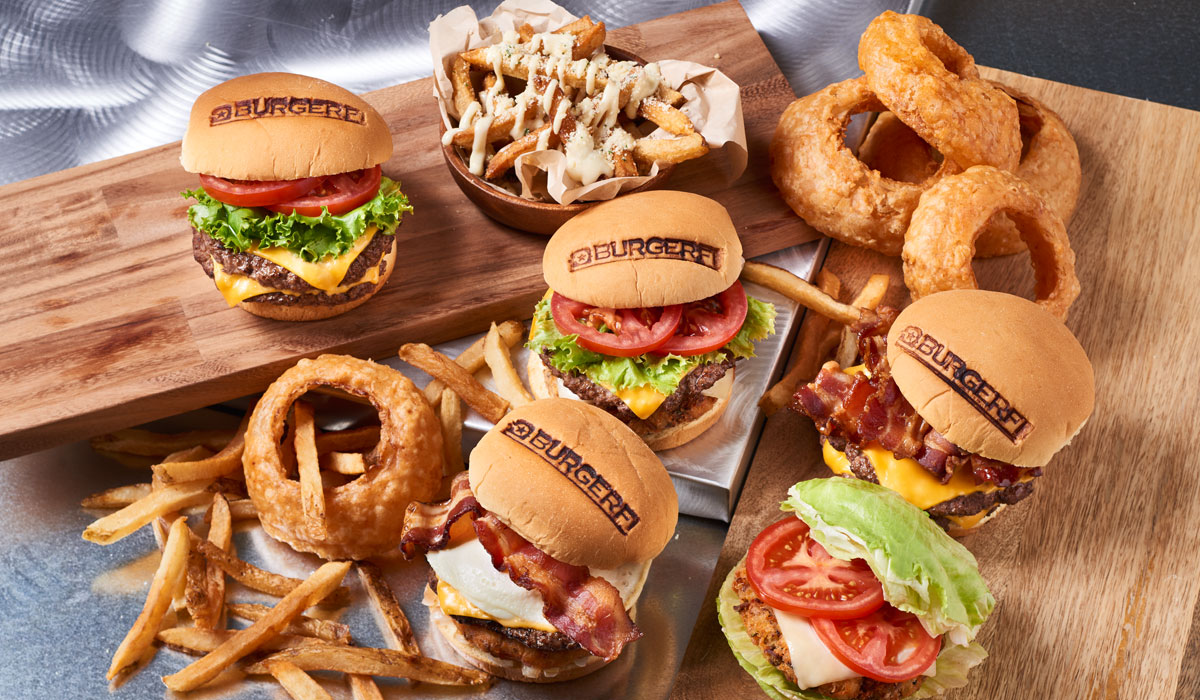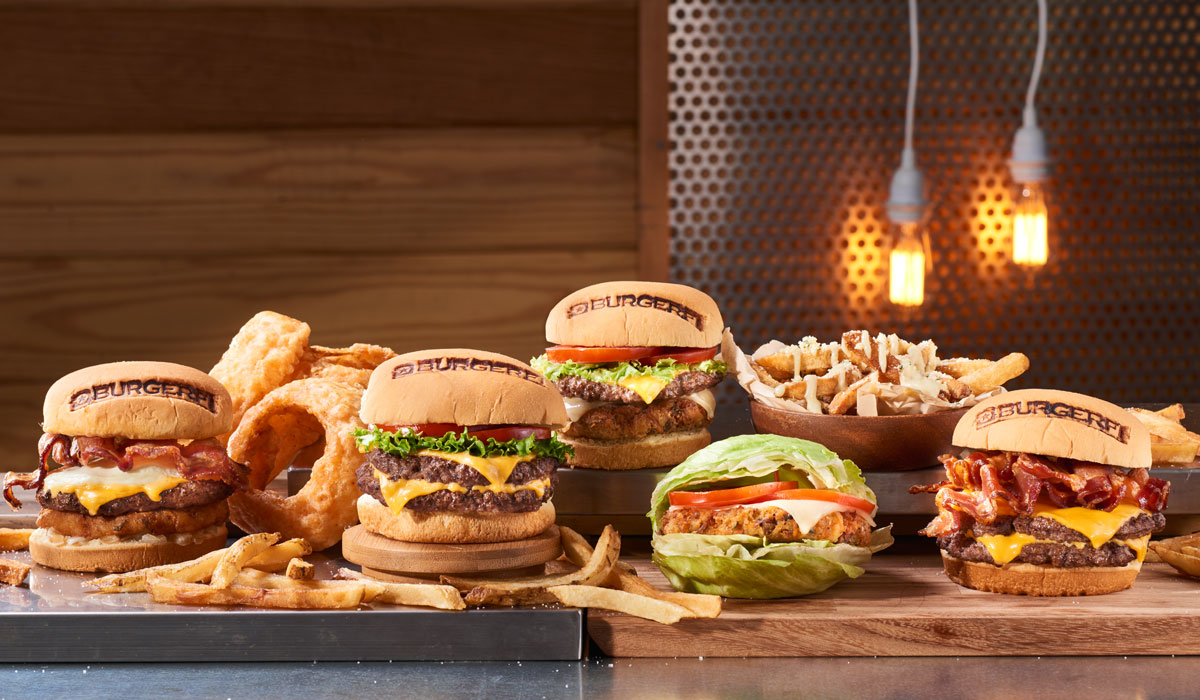Picture this: It’s noon. The lunch rush is here. A cashier gets a phone call for a pick-up order, scrambles to grab a pen. They can hardly hear. The guest waiting starts tapping their wrist. The queue of customers builds and flows out the door. People walk up, see the wait, and walk right by.
Does this sound like an ideal customer experience?
Between 2013–2015 BurgerFi, founded in 2011 in South Florida, was one of the fastest growing better-burger fast casuals on the scene, adding some 25–30 units per year. Then executives hit the pause button.
For the next two years, BurgerFi decided it was time “to figure out everything else,” says Charles Guzzetta, franchise development manager. “To work with our franchisees, and make sure they become as successful as possible. To improve our infrastructure. Human resources. Investments in technology, everything from the standpoint of our restaurant-franchisor support service system.”
BurgerFi came up with some innovative solutions to all of its concerns, and is ready to ramp up expansion again, with 15–20 stores planned for the second half of 2018, and another 25–30 in 2019—a growth rate the brand sees steadying for the next five years. Currently there are 105 restaurants. So an additional 125 units, perhaps more, draw up the framework for BurgerFi’s potential by 2023.
Guzzetta is confident in the mark because of the work BurgerFi did to get there, from a technology, off-premises, franchisor, and operational standpoint. To illustrate one point, let’s return to the first dilemma.
About eight months ago, BurgerFi opened a call center to field its off-premises orders.
“The reason we did that was solely to preserve the in-store guest experience,” says Nick Raucci, BurgerFi’s director of operations. Raucci refers to the image of a cashier holding their hand up to a customer, telling them to hold on.
“We call it the phone Heisman,” Guzzetta says.
“They’re ruining the experience for the guest, and the guest on the phone, and they’re a mess from it,” Raucci adds.
Calls for take-out orders now go to a central location. There are 10–15 people working at all times, trained on the menu, and on upselling. It’s quiet. No background noise. No distractions. And the transactions flow right into BurgerFi’s point-of-sale system in the designated restaurant. Whether an order comes from the call center, cash register, or BurgerFi’s ordering platforms, the kitchen doesn’t know the difference. Raucci says the call center hasn’t just made ordering from BurgerFi a better experience for guests and employees, it’s also lifted check average and boosted accuracy.
“All of this, in my mind, was to help in-store guest experience while building revenues through other additional things that we already had that we weren’t doing that well before,” Raucci says. “We even added a separate make-line in our kitchen now to accommodate the takeout, delivery, phone orders, and all that, so that it doesn’t impact our in-store experience as well.”
The second make-lines are another reflection of BurgerFi’s efforts to build restaurants designed with the operator and franchisee of the future in mind.
And from a sales perspective, BurgerFi is in ideal position to soar from its investments. Year-to-date same-store sales are up 8.5 percent on top of positives comps in 2017. They’re targeting $2 million average-unit volumes. Forty percent of the business systemwide is takeout, and growing.
One particular area of promise is what the company calls “virtual drive thru.” Essentially, it refers to curbside pickup with a technology-first feel. The idea being you go to BurgerFi’s website, click your nearby location, select your order, and then drive to the store to pick up. BurgerFi is building designated spots through GPS-enabled location services to alert staff when a customer arrives. Guzzetta says a test phase is coming for the platform, which excites corporate since it can onboard into every location, current and future, without changing the structure of units.
“People who love BurgerFi, love BurgerFi. They go crazy for it. Those are our core guests. Those are the people who brought us to where we are today.” — Charlie Guzzetta, BurgerFi franchise development manager.

BurgerFi is also integrating delivery capabilities into its own website. This is a big deal, Guzzetta says, since it will allow the chain to own the opportunity instead of getting in line with the hordes of other burger concepts coming up for air in the third-party delivery ballpit. Rather than head to Postmates and UberEats, for example, and just type in burger and see hundreds of options pop up, BurgerFi will own the customer experience with delivery. “It’s all of our advertising. It’s all of our imagery,” he says.
This will integrate straight from BurgerFi’s site, as well as its Yelp and Google listing pages. The links will drive guests right to BurgerFi and its brand, and all that entails.
“It’s controlling the flow from start to finish. It’s making it more convenient for our customers. BurgerFi as a brand has a very loyal group,” Guzzetta says. “People who love BurgerFi, love BurgerFi. They go crazy for it. Those are our core guests. Those are the people who brought us to where we are today. We want to make sure we are servicing them and being convenient for them and their families.”
“There was a huge technology push to get there,” he adds. “It’s not as easy as pulling a lever and all of sudden you have delivery on your webpage. This has been years in the making. All integrated so that as we grow and scale and sign more multi-unit development deals with these big franchise groups, this is all turn-key.”
When Guzzetta speaks about BurgerFi’s core guests, he’s referencing a pool of customers who crave this type of technology. Thirty percent of the brand’s demographics are aged 25-30, with 55 percent female and 45 percent male. Less than 5 percent are 65-plus; less than 10 percent are 55–64.
“While the rest of the casual dining industry, Applebee’s, Chili’s, and those concepts are trying to do anything they can to pull in the millennial population, here we are, we have them,” Guzzetta says. “We need to use that to our advantage. We know that this population is digital focused. We have to be technology friendly.”
And doing so is a perfect complement to the traits that attracted millennial guests in the first place, he says. Things like chairs made from upcycled Coke bottles. Tables created from more than 700,000 upcycled milk jugs. Wood-panel walls designed from No. 2 Southern Pine Lumber—renowned for its renewable nature. Ten-foot fans that consume 66 percent less energy. Countertops made from 100 percent compressed recycled paper.
And food wise, BurgerFi uses certified American Black Angus beef from ranches that adhere to its “Never-Ever” program. No steroids, antibiotics, growth hormones, chemicals, or additives. Never frozen. BurgerFi says only about 1 percent of the beef produced in the U.S. meets its standards. This all to complement craft beer and wine, fresh-cut fries, shakes, and vegetarian, vegan, and plant-based options.

Guzzetta says the brand is poised to grow with an 80/20 percent split between franchised and corporate units, respectively. Keeping company-run units will be key to testing new products and for training, which, in regards to owners, operators, general managers, and assistant managers, is always conducted in corporate facilities.
BurgerFi’s franchisor training team is comprised of 18 culinary trained industry professionals. There are ongoing web-based training courses for new hires. BurgerFi also offers access to Wisetail, it’s robust learning management system, which features training videos, interactive courses, and documentation for employees. BurgerFi promotes cross training and employee development practices through its “Steps to Success” program.
Paul Griffin, BurgerFi’s director of culinary, says: “If you don’t have a stake in the game when you’re franchising you can get turned upside down pretty quick. You’ve got to stay on top of the system. You need to be able to do the system better than anybody else in order to be able to teach it and keep it running. If you start running the other way and you’ve got two stores and 100 franchises, you can get bullied pretty quickly.”
When BurgerFi began franchising in 2012, it linked with some single-unit operators. Guzzetta says they’re looking for hands-on operators and want to move forward with multi-unit development deals. BurgerFi is in 20 states, with 45 Florida restaurants.
Non-traditional will play a lead role in BurgerFi’s development as well. The chain has partnerships with HMS Host and Aramark, and is currently exploring development opportunities nationwide. This includes college campuses and universities, transportation stations, airports, sports facilities, and more. One of its most successful nontraditional locations to date is the Fort Lauderdale-Hollywood International Airport Terminal 1 spot.
Guzzetta says all of the changes in the last couple of years were intended to launch BurgerFi across multiple models, and position it as a fast casual brand with staying power.
“A lot of these things we’ve actually been working on for two-three years. We’re starting to roll them out now because we vetted these companies. We heavily tested them. We went through bids and bids and bids to make sure that we go the right technology, the right partner—somebody that sees that opportunity with BurgerFi to grow over the years and move forward with a lot of great vendors,” he says. “It was all to get to the point where we’re ready to scale, and we’re at that level right now.”









